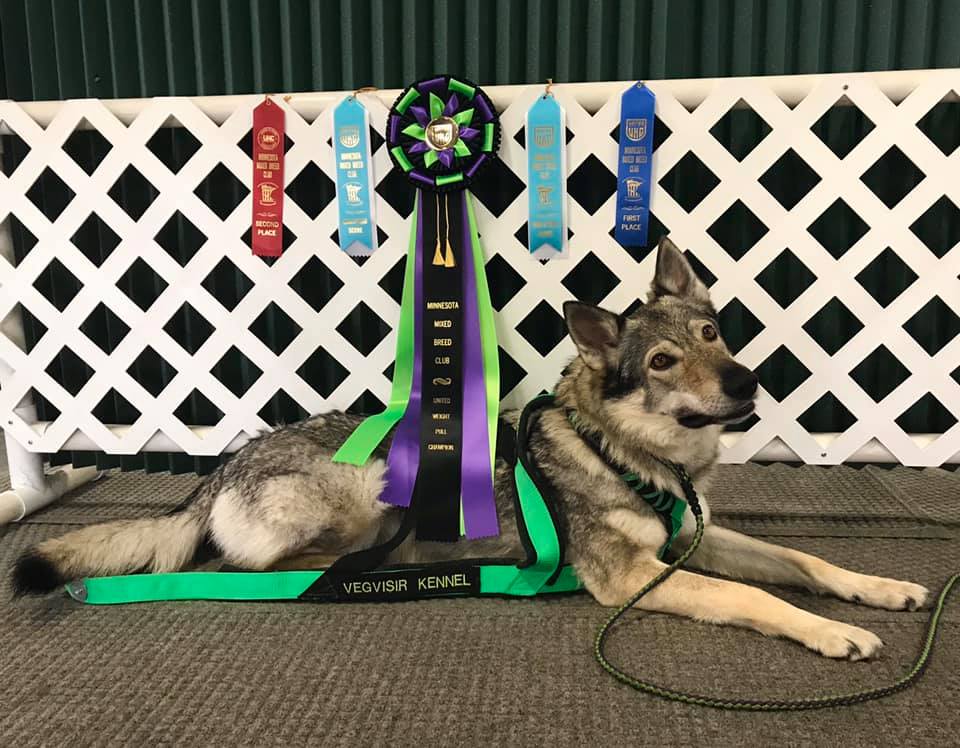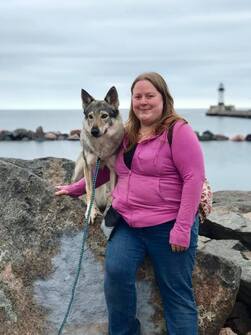 I often get inquiries about what I look for in a trainer. So, I decided to write a bit about what I look for. Everyone will have a different approach as people want different things out of training. Currently I work with a few different trainers in my area. Can I train my dogs myself…yes. So, why do I take my dogs to classes? That is easy…socialization, working around distractions, and it is nice to have a trainer evaluate the work you are doing with your dog. When training it is critical to get feedback from others on how you are doing. Why? Simply because practice does NOT make perfect. If you are training your dog and getting a slightly off response, continuing to train that will just commit that off response to muscle memory. Then to fix it you must undo what you have done to redo your training for the proper response. So, perfect practice makes perfect. The sooner you find a problem and can troubleshoot the problem, the easier it is to fix the problem. Another trainer is a great person to have evaluate you and your dog. 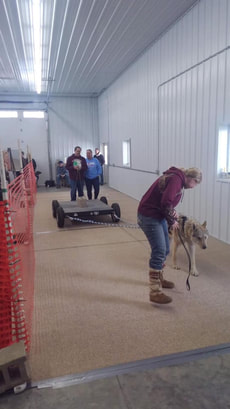 Also, with each new trainer you work with you will get a different approach. I have been training dogs for over 20 years (yep, you read that right, I have been training since I was quite young) It’s ok to work with a few different trainers as you and your dog grow. The way I trained my first dog is nothing like how I train my current dog. Every trainer I work with has given something new to my training style and ability. As I learn, I grow as a trainer. So, do not think because you used this one trainer you now must use them and only them forever. Doing this you will eventually find yourself in a rut where you are not growing or expanding your skills. The one piece of advice I have when looking for your first trainer, is to know where you want your dog to be and then find a trainer that can get you there. If you think you want a competition dog, then I highly recommend finding a trainer that has several titled dogs. (also, dogs that are titled beyond the first level of a sport) If you want a family pet with stellar house manners, then find a trainer who has dogs that fit what you are looking for. Now I know what you are thinking, it is just basic obedience why does it matter at this point if I want to compete down the road? Anyone who has been training and competing knows how important foundation work is. Your foundation work is the groundwork for all competition training down the road. You cannot rush or slack in this department or you will greatly struggle down the road. If you have a trainer that does not compete with their dog and is training a family pet…than an amazing family pet is what you will wind up with. A trainer that also competes is going to start your dog down the right path for training at the competition level as you move forward. 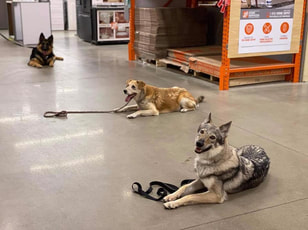 If you are lucky enough to live near a training facility or club that offer classes in different sports…sign up. If you can get started in a sport with the help of an experienced trainer, that is the best way to go. However, if you are like me and live in an area where training facilities are hours away, do not give up. There is a way you can still move forward. Once you have the groundwork in, find training DVDs to help get your start. Again, do your research and find a professional trainer that fits where you want to be. I love training DVDs as it opens the door to working with trainers from all over the world. The downfall is that you do not have that immediate critique that you have with in person training. So, I highly encourage and recommend that you look for and attend training seminars. Seminars allow you to fine tune and/or trouble shoot the training you have done at home. Also, go to trials and talk with other owners. You will be amazed how many of them will talk with you about training and competing. If there is one thing dog people like to talk about is their dogs. In doing this I have made some lifelong friends that I can meet up with or send videos to for feedback. Jenna Here are links to just two of favorite trainers’ DVDs…
Susan Garrett https://dogsthat.com/shop/dvd/?_ga=2.163635133.385969512.1608004135-447489023.1608004135 Michael Ellis https://leerburg.com/ellisdvds.htm Michael Ellis free online videos https://leerburg.com/flix/newestvideos.php
0 Comments
I have seen a few people inquiring about Czechoslovakian Vlčák as service dogs.
Let's first look at what a Service Dog is. Under the Americans With Disabilities Act, or ADA, a service animal is defined as a dog that has been individually trained to do work or perform tasks for an individual with a disability. The task(s) performed by the dog must be directly related to the person's disability. Tasks can be many different things including, guide work for people who are visually impaired, hearing tasks, mobility work, medication reminders, alerting to blood sugar changes, alerting and responding to panic attacks, seizures and many other things. The criteria here, is that the handler is disabled, and the dog is trained in a behavior that directly helps mitigate the persons disability. Lets also look at what a Service dog is not. Emotional Support and Therapy dogs are not considered Service Dogs because they have not been trained to perform a specific job or task. In other words, if the only thing that the dog is doing, is just being there, and that is comforting to the owner, that dog would not be considered a service animal under the ADA. The law doesn't exclude any breeds, and the Federal ADA over-rides local breed bans in regards to service dogs. So why not use a CsV? If this is your thinking, you are partially correct. However, it can get sticky very quickly if the place you are trying to access, or local authorities should show enough evidence that they believe your dog may have wolf in it. But the CsV is a recognized dog breed!!! Again, you are correct in that technicality. However, currently the ADA protects domestic dogs, and in certain cases, miniature horses as Service Animals. If you look at CsV pedigrees, or if you look at a genetic break down of the individual dog, you will find that many of them will also fall into the category of low content wolf dogs. Now lets look at what makes a good service dog, along with some of what is required by law for behavior. They must be non aggressive to both humans and animals. They cannot show any protective aggression unless the handler is being immediately threatened and it would be reasonable for a human to react aggressively in the same instance. They must be under control at all times. They need to be very stable in every sort of environment that you could encounter in public. Service dogs also need to be very biddable, or obedient to the handlers directions so as to carry out the work or tasks they are trained to perform for the handler. Practically speaking, this means the dog must be attentive enough to the handler that the dog doesn't need to be constantly reminded to pay attention to the handler when they are asking the dog to do something. If the handler needs assistance with something that only the dog, and not the handler, would be aware of, such as for hearing assistance, or alerting to blood sugar, heart rates, or other chemical changes in the handlers body, the dog must be extremely attentive to the handler and be both willing and able to respond to things without direction from the handler. And now, let us look at what the breed standards say about the CsV. The FCI standard calls for a dog that is fearless and courageous, yet also suspicious. The CSVCA also describes a dog that has quick reactions, is fearless, courageous, and suspicious. CsV's can have both a dominant and and independent temperament. The UKC standard is much the same. CsV's are also high energy, high prey drive, and need quite a bit of daily physical and mental stimulation. So, what's the big deal? They were bred to be multipurpose working dogs! If they have a job to do that would provide them with both the mental and physical stimulation! Yes, it would. However, the combination of character traits in these dogs can make for some challenging moments when training. While service dogs need to be able to ignore other people and dogs, they also must be tolerant of both in close proximity on occasion. With a CsV's natural suspicion of strangers, this could present problems with reactivity. Remember how a service cannot show any kind of aggression during public access? Also, if you as the handler have any kind of medical episode, or accident, the dog may very well not allow a EMT's or other First Responders to approach and help. Another criteria, a service dog should in general be attentive and biddable. Due to their natural suspicion, and their prey drive, many CsV's tend to focus their attention outwards when in public, rather than keep focus on their handler. This has the potential to present a couple of different issues. One, if the handler needs to direct the dog to do something, is the CsV going to be attentive enough to you that they will hear your cues? Or will they be so focused elsewhere that you will need to constantly remind them to give you their attention? The other possible issue is if you are expecting your dog to alert to medical episodes such as blood sugar or heart rate changes. In order for a dog to do this reliably, they must be very handler oriented, even with major distractions. They must also be reliable enough that they won't provide an unnecessary alert to try and get to a reward. Another thing to consider is why do you need a Service dog? A person who needs a service dog, has the dog with them because they need the help. If you, or someone you know, needs that kind of assistance, consider whether you have the energy and ability to provide the amount of training and extra work a breed like this will require. Will you have the energy to be that much more alert to your surroundings to create the optimal working environment for your dog? I am not saying that it can't be done, but these are serious questions and issues to consider before getting a dog like this to train as a service dog. In summary, CsV's have been bred to be a very unique, hard working dog. They are intelligent, independent, phenomenal dogs. But the things that set them apart as unique from other beloved and wonderful breeds, more often than not makes them extremely incompatible with functioning as a service dog. You will find exceptions within the breed. But, these are just that, exceptions to the rule that this wonderful breed is not best suited to being a service dog. If you are considering a service dog, or if you know someone who is considering this breed as a service dog, I would strongly encourage them to look at other breeds first because of the potential for the person to put a lot of time, expense and effort into a dog that will be amazing, but they will not be able to function in the way you need them to. Alison 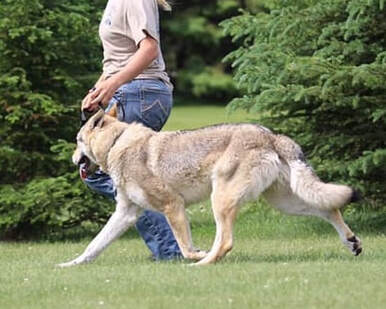 Prior to getting my first CSV I had never been to a conformation show or sporting event nor had I ever trained a dog to compete. The only knowledge I had of conformation came from watching it on tv. I got Kaida with the hopes of getting into the show and sporting world but when she came, I felt quite overwhelmed. What if I messed up, what if I did everything wrong, what if I made a fool of myself, what if Kaida refused to cooperate…on and on the doubts in myself and Kaida went. Finally, a friend convinced me to just go to a show. It took a while, but I finally found a small conformation show and signed up. When I got there, I was a bundle of nerves and still had no clue what I was doing. Thankfully an experienced handler reached out to me. She told me to set my crate up next to hers and she introduced me to several other handlers. She taught me how to stack my dog and we watched the groups go before ours and she explained what they were doing and why. Then it was my turn. The whole time I was in the ring I just kept thinking, “don’t trip, don’t trip.” Before I knew it, I was done…and I hadn’t tripped. We survived the weekend and ended up having a lot of fun. The best advice I got that weekend was to accept that I was going to make mistakes, that some shows your dog was just not going to cooperate, that there were going to be embarrassing moments, and that it happened to everyone. Since that weekend I have had some of those embarrassing moments and guess what…we survived. When I talk to others about getting into showing I often hear the same fears and doubts that I had. So Kaida and I are here to say, “Forget them!” Just get out there and have fun. It doesn’t matter if you blunder. Everyone has those stories and one day you’ll be the experienced handler telling your embarrassing stories to get the first timer over their jitters. After getting into conformation I quickly found myself addicted. Now we attend as many performance events as we can. We’ve signed up to try sports we’ve never even heard of before, let alone trained in…but why not! Titles held by my first show/competition dog to date: UKC CH, UWP, UWPCH, URO1, CGC, CGCA, TKN, TKI, TKA, TKP, TKE, ICN, ICN2, ICN3, IMN, IUN, IGT, IGT 2, ICF, ICF 2, ICF3, RN, VIP, 4 Total Dogs…and this list will continue to grow because someone convinced me to get out of my own way. So, take a chance and get out there. Have fun, meet new people, and learn a new sport. Showing is a great way to build your relationship with your dog and for your dog to be an ambassador for the breed. -Jenna |
AuthorAuthor's name will be on each blog post. You will hear from me as well as co-owners. Archives
March 2021
Categories |
